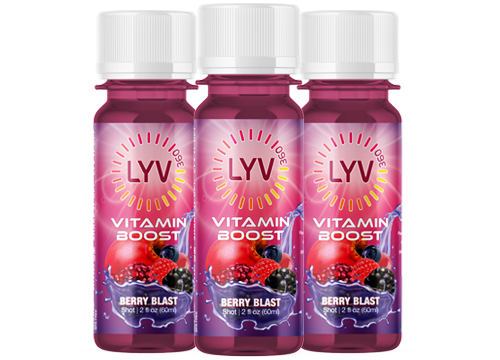 Unique Health Benefits of Honey
Unique Health Benefits of Honey
Honey is a syrupy liquid that honeybees make from plant nectar. Honey contains mostly sugar, as well as a mix of amino acids, vitamins, minerals, iron, zinc and antioxidants.
Antioxidants
Honey contains many important bioactive plant compounds and antioxidants, such as polyphenols , flavonoids and phenolic acids. Antioxidants help neutralize reactive oxygen species (ROS) in your body, which can build up in cells and cause damage. Many of honey’s health benefits are attributed to its antioxidant content.
- Source: Mayo Clinic
Nutritional & Non-Nutritional Components of Honey
Today, approximately 300 types of honey have been recognized. These varieties are related to the different types of nectar that are collected by the honeybees. The main composition of honey is carbohydrates that contribute 95–97% of its dry weight. Furthermore, honey includes main compounds, such as proteins, vitamins, amino acids, minerals, and organic acids. Pure honey also consists of flavonoids, polyphenols, reducing compounds, alkaloids, glycosides, cardiac glycosides, anthraquinone, and volatile compounds. Monosaccharides (fructose and glucose) are the most important sugars of honey and may be contributed to the most of the nutritional and physical effects of honey. In addition to monosaccharides, smaller quantities of disaccharides, trisaccharides, and oligosaccharides are present in honey. Many of these sugars are formed during the honey ripening and maturation times. Gluconic acid, a product of glucose oxidation, is the main organic acid that is present in honey; in addition, small amounts of acetic, formic, and citric have been found. These organic acids are responsible for the acidic (pH between 3.2 and 4.5) property of honey.
Honey also consists of some important amino acids, such as all nine essential amino acids and all nonessential amino acids except for asparagine and glutamine. Proline was reported as the primary amino acid in honey, followed by other types of amino acids. Enzymes constitute the main protein ingredients of honey. The vitamin level in honey is low and does not close to the recommended daily intake. All of the water-soluble vitamins exist in honey, with Vitamin C being the most frequent. Approximately 31 variable minerals have been found in honey, including all of the major minerals, such as phosphorus, sodium, calcium, potassium, sulfur, magnesium, and chlorine. Many essential trace components are detected in honey, such as silicon (Si), rubidium (RB), vanadium (V), zirconium (Zr), lithium (Li), and strontium (Sr). However, some heavy metals such as lead (Pb), cadmium (Cd), and arsenic (As) are present as pollutants.
Previous studies have detected the approximately 600 volatile compositions in honey that contribute to its potential biomedical effects. The volatile compounds of honey are generally low but include aldehydes, alcohols, hydrocarbons, ketones, acid esters, benzene and its derivatives, pyran, terpene and its derivatives, norisoprenoids, as well as sulfur, furan, and cyclic compounds. Flavonoids and polyphenols, which act as antioxidants, are two main bioactive molecules present in honey. Recent evidence has shown the presence of nearly thirty types of polyphenols in honey. The existence and levels of these polyphenols in honey can vary depending on the floral source, the climatic and geographical conditions. Some bioactive compounds are present in all types of honey whereas naringenin and hesperetin are found only in specific varieties. In general, the most phenolic and flavonoid compounds in honey consist of gallic acid, syringic acid, ellagic acid, benzoic acid, cinnamic acid, chlorogenic acid, caffeic acid, isorhamnetin, ferulic acids, myricetin, chrysin, coumaric acid, apigenin, quercetin, kaempferol, hesperetin, galangin, catechin, luteolin, and naringenin. The ingredients of honey have been reported to exert antioxidant, antimicrobial, anti-inflammatory, antiproliferative, anticancer, and antimetastatic effects.
- Source: National Institute of Health (NIH)
NOTICE:
These statements have not been evaluated by the Food and Drug Administration. This product is not intended to diagnose, treat, cure, or prevent any disease.
Antioxidants
Honey contains many important bioactive plant compounds and antioxidants, such as polyphenols , flavonoids and phenolic acids. Antioxidants help neutralize reactive oxygen species (ROS) in your body, which can build up in cells and cause damage. Many of honey’s health benefits are attributed to its antioxidant content.
- Source: Mayo Clinic
Nutritional & Non-Nutritional Components of Honey
Today, approximately 300 types of honey have been recognized. These varieties are related to the different types of nectar that are collected by the honeybees. The main composition of honey is carbohydrates that contribute 95–97% of its dry weight. Furthermore, honey includes main compounds, such as proteins, vitamins, amino acids, minerals, and organic acids. Pure honey also consists of flavonoids, polyphenols, reducing compounds, alkaloids, glycosides, cardiac glycosides, anthraquinone, and volatile compounds. Monosaccharides (fructose and glucose) are the most important sugars of honey and may be contributed to the most of the nutritional and physical effects of honey. In addition to monosaccharides, smaller quantities of disaccharides, trisaccharides, and oligosaccharides are present in honey. Many of these sugars are formed during the honey ripening and maturation times. Gluconic acid, a product of glucose oxidation, is the main organic acid that is present in honey; in addition, small amounts of acetic, formic, and citric have been found. These organic acids are responsible for the acidic (pH between 3.2 and 4.5) property of honey.
Honey also consists of some important amino acids, such as all nine essential amino acids and all nonessential amino acids except for asparagine and glutamine. Proline was reported as the primary amino acid in honey, followed by other types of amino acids. Enzymes constitute the main protein ingredients of honey. The vitamin level in honey is low and does not close to the recommended daily intake. All of the water-soluble vitamins exist in honey, with Vitamin C being the most frequent. Approximately 31 variable minerals have been found in honey, including all of the major minerals, such as phosphorus, sodium, calcium, potassium, sulfur, magnesium, and chlorine. Many essential trace components are detected in honey, such as silicon (Si), rubidium (RB), vanadium (V), zirconium (Zr), lithium (Li), and strontium (Sr). However, some heavy metals such as lead (Pb), cadmium (Cd), and arsenic (As) are present as pollutants.
Previous studies have detected the approximately 600 volatile compositions in honey that contribute to its potential biomedical effects. The volatile compounds of honey are generally low but include aldehydes, alcohols, hydrocarbons, ketones, acid esters, benzene and its derivatives, pyran, terpene and its derivatives, norisoprenoids, as well as sulfur, furan, and cyclic compounds. Flavonoids and polyphenols, which act as antioxidants, are two main bioactive molecules present in honey. Recent evidence has shown the presence of nearly thirty types of polyphenols in honey. The existence and levels of these polyphenols in honey can vary depending on the floral source, the climatic and geographical conditions. Some bioactive compounds are present in all types of honey whereas naringenin and hesperetin are found only in specific varieties. In general, the most phenolic and flavonoid compounds in honey consist of gallic acid, syringic acid, ellagic acid, benzoic acid, cinnamic acid, chlorogenic acid, caffeic acid, isorhamnetin, ferulic acids, myricetin, chrysin, coumaric acid, apigenin, quercetin, kaempferol, hesperetin, galangin, catechin, luteolin, and naringenin. The ingredients of honey have been reported to exert antioxidant, antimicrobial, anti-inflammatory, antiproliferative, anticancer, and antimetastatic effects.
- Source: National Institute of Health (NIH)
NOTICE:
These statements have not been evaluated by the Food and Drug Administration. This product is not intended to diagnose, treat, cure, or prevent any disease.







